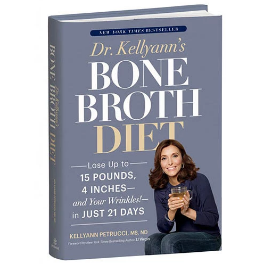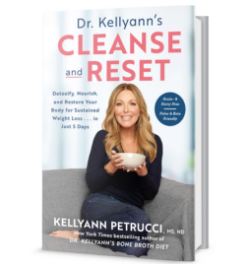
How To Freeze Beef Broth: Step-by-Step
Discover the transformative power of freezing beef broth and unlock new culinary possibilities in your kitchen. This comprehensive guide will lead you through the straightforward yet impactful process of preserving this essential ingredient, ensuring you always have a rich, flavorful base ready to enhance your meals. Whether you're juggling the demands of a busy family, striving for healthier eating habits, or exploring new culinary horizons, mastering the art of freezing beef broth can revolutionize your approach to meal preparation. With this technique, you gain the convenience of having nutritious, convenient homemade broth at your fingertips, ready to elevate the taste and nutritional value of your dishes effortlessly.
Why Should You Freeze Beef Broth?
Freezing beef broth is a practical and efficient way to ensure you always have a rich, flavorful base ready to enhance your meals. By preserving the broth at its peak freshness, you can enjoy the depth of homemade flavors without the time commitment of making broth from scratch each time. This method not only helps in reducing food waste but also allows you to control the ingredients, ensuring a healthier option free from preservatives and excess sodium. For busy families, health-conscious individuals, and culinary enthusiasts alike, having frozen beef broth on hand simplifies meal preparation and enhances the nutritional value of everyday dishes. Moreover, it provides an economical way to maximize the use of ingredients, stretching your grocery budget further.
How To Freeze Beef Broth: Step-by-Step
Step 1: Prepare the Broth
Begin by making your beef broth using high-quality beef bones, vegetables, and herbs, or opt for a convenient powdered broth mix if you're short on time. Simmer the mixture for several hours to extract deep flavors and nutrients. Once the broth is ready, strain it to remove any solids, leaving you with a clear, rich liquid.
Step 2: Skim the Fat
After straining, allow the broth to cool slightly, then skim off any excess fat that rises to the surface. This step helps in achieving a cleaner taste and a healthier broth.
Step 3: Cool the Broth
Let the strained broth cool to room temperature. This is essential to prevent condensation and ice crystals from forming during freezing, which can alter the texture and flavor of the broth.
Step 4: Portion the Broth
Decide on portion sizes based on your cooking needs. Use ice cube trays for small amounts or larger containers for bigger portions. This flexibility allows you to thaw only what you need, minimizing waste.
Step 5: Transfer to Freezer-Safe Containers
Pour the cooled homemade stock into freezer-safe containers, bags, or glass jars, leaving some space at the top to allow for expansion as the broth freezes. Ensure the containers are airtight to prevent freezer burn and preservation of flavor.
Step 6: Label and Date
Clearly label each container with the contents and the date of freezing. This practice helps you track storage times and ensures you use the oldest broth first, maintaining a fresh supply.
Step 7: Freeze the Broth
Place the containers in the freezer, ensuring they are upright and stable. Allow the broth to freeze completely, which typically takes several hours. Once frozen, you can rearrange them to optimize freezer space.
Does Beef Broth Freeze Well?
Yes, beef broth freezes exceptionally well, making it a convenient option for preserving this flavorful and nutritious ingredient. When properly stored in airtight, freezer-safe containers, beef broth can maintain its quality for several months. The freezing process locks in the rich flavors and nutrients, ensuring that when thawed, the broth retains its original taste and texture. This makes it an ideal solution for meal preppers and busy cooks who want to have a ready supply of homemade broth on hand. Additionally, freezing beef broth helps reduce food waste by allowing you to store excess broth for future use, rather than discarding it. Whether used as a base for soups, stews, or sauces, frozen beef broth provides a versatile and healthy option that enhances the flavor and nutritional value of your dishes.
How Much Beef Broth Can You Freeze?
The amount of beef broth you can freeze largely depends on the size of your freezer and the containers you choose to use. Generally, beef broth can be frozen in various portion sizes to suit your cooking needs, from small ice cube trays for single servings to larger containers for family-sized portions. When planning to freeze beef broth, it's important to consider how you typically use it in recipes. For instance, freezing in one-cup portions can be convenient for soups and stews, while smaller portions are ideal for sauces or gravies. Ensure that the containers or bags you use are freezer-safe and leave some space at the top to allow for expansion as the broth freezes. By organizing your freezer space efficiently, you can store a substantial amount of broth, ensuring you always have a flavorful, nutritious base ready to enhance your meals. This method not only helps in reducing food waste but also provides the flexibility to thaw just the right amount needed for any dish.
Can I Freeze Beef Broth In Ziploc bags?
Yes, you can freeze broth in Ziploc bags, and it is actually a popular and efficient method for storing broth. Using Ziploc bags allows you to save space in your freezer, as the bags can be laid flat and stacked once the broth is frozen. To freeze broth in Ziploc bags, first ensure that the broth has cooled to room temperature to prevent condensation and ice crystal formation. Pour the broth into the bags, leaving some space at the top for expansion as the liquid freezes. Seal the bags tightly to prevent leaks and freezer burn. It's also a good idea to label each bag with the date and contents for easy identification later. This method not only helps in organizing your freezer but also makes it easy to thaw just the right amount of broth needed for your recipes, minimizing waste and maximizing nutritional benefits.
What Is The Best Container To Freeze Broth In?
The best container for freezing broth depends on your storage needs and available freezer space, but generally, airtight, freezer-safe containers are ideal. Glass jars with wide mouths are excellent for freezing broth, as they are durable and do not absorb odors. However, it's crucial to leave ample headspace to allow for expansion and prevent cracking. Plastic containers specifically designed for freezing are also a great option, offering flexibility and stackability. For those looking to save space, heavy-duty freezer bags are highly effective, as they can be laid flat and stacked, maximizing freezer efficiency. Regardless of the container type, ensure it is airtight to prevent freezer burn and preserve the broth's rich flavors and nutrients. Labeling each container with the date and contents is also recommended for easy identification and optimal rotation of your frozen goods.
Common Mistakes To Avoid When Freezing Beef Broth?
- Not Cooling the Broth Properly: Failing to cool the bone broth to room temperature before freezing can lead to the formation of ice crystals, which can affect the texture and flavor of the broth.
- Overfilling Containers: Filling containers to the brim without leaving space for expansion can cause them to crack or burst as the broth freezes and expands.
- Using Non-Freezer-Safe Containers: Using containers that are not designed for freezing can lead to freezer burn or contamination, compromising the quality of the broth.
- Forgetting to Label and Date: Neglecting to label and date your containers can lead to confusion about the contents and freshness, resulting in wasted broth.
- Freezing in Large Portions Only: Freezing broth in large portions without considering smaller needs can lead to unnecessary thawing of excess broth, increasing the risk of waste.
Conclusion
Embracing the practice of freezing beef broth can revolutionize your approach to meal preparation, offering a seamless blend of convenience and nutrition. This technique ensures that you always have a robust, homemade stock available, ready to enhance the flavor of soups, stews, and sauces. By freezing broth, you extend its shelf life significantly, allowing you to make the most of your culinary efforts without the pressure of immediate consumption. This approach is particularly beneficial for those who prioritize healthy eating, as it allows for complete control over the ingredients and seasoning. Additionally, it supports efficient meal planning, reducing the stress of last-minute cooking decisions. With frozen beef broth at your disposal, you can effortlessly elevate your dishes, making every meal a delightful experience.
Final Thoughts
In What Ways Can Beef Broth Transform Your Cooking Experience? Dr. Kellyann's premium offerings include chicken, beef, and french onion bone broths, all loaded with collagen and free from GMOs and sugar. Perfect for supporting body recovery, these broths can be a valuable addition to your wellness routine. Discover Dr. Kellyann's collection to elevate your health journey.
Sources
















